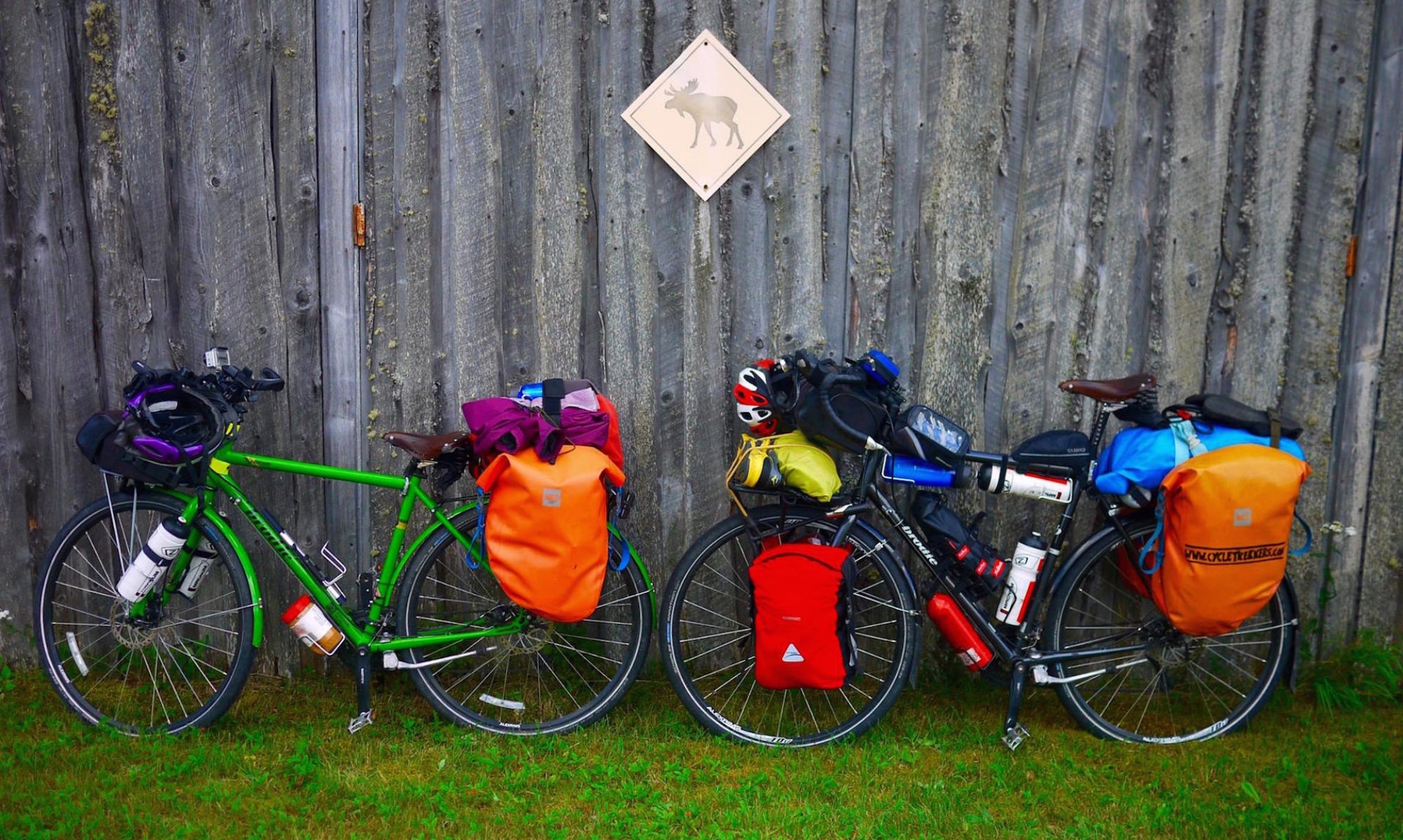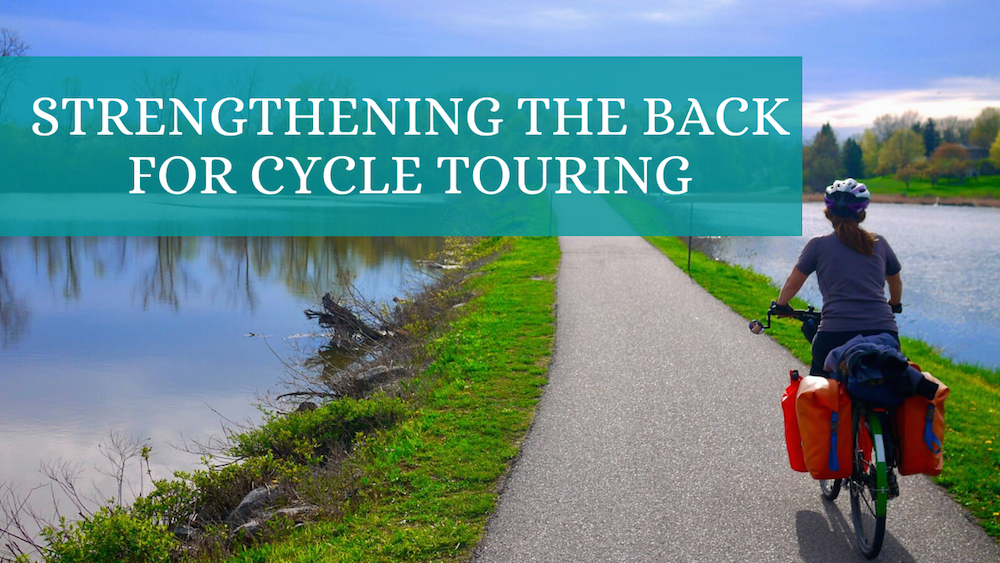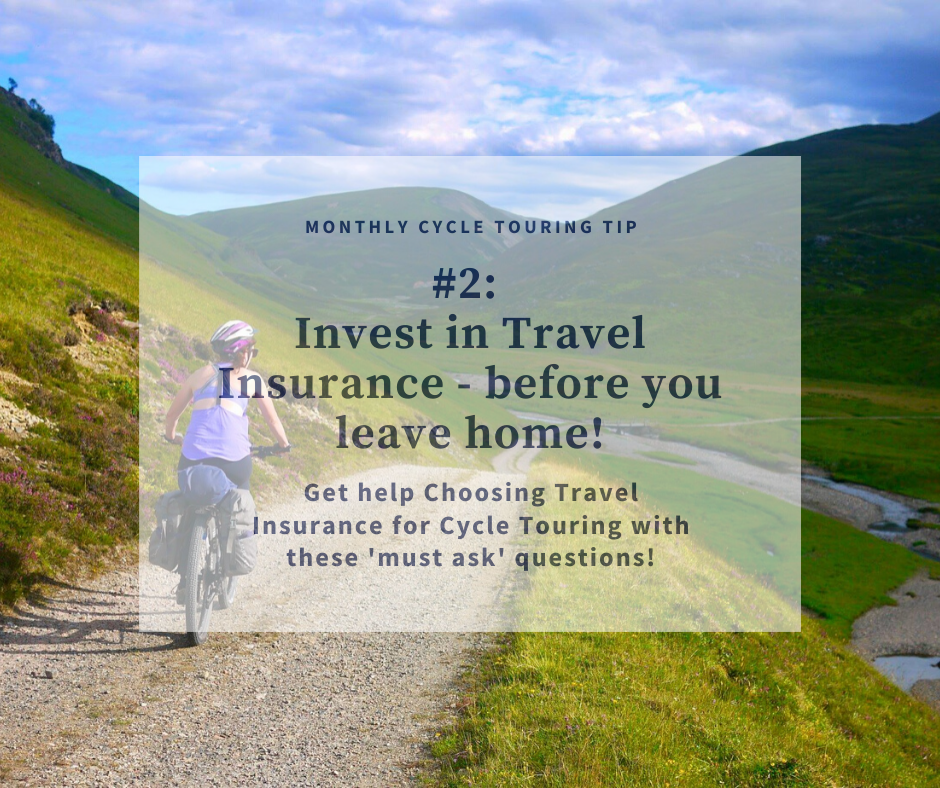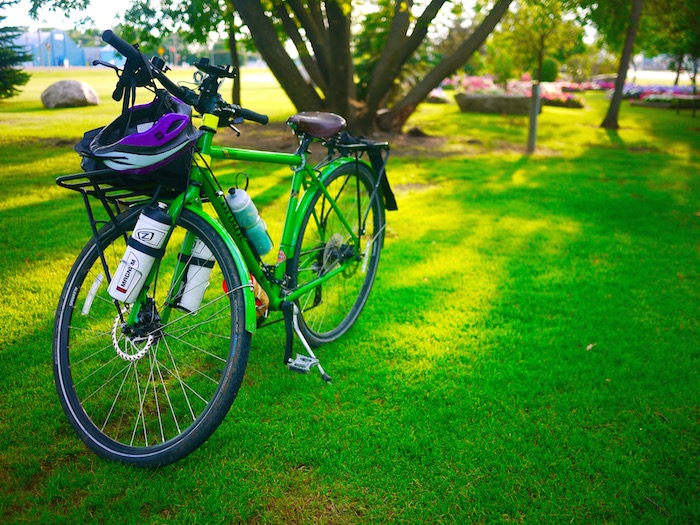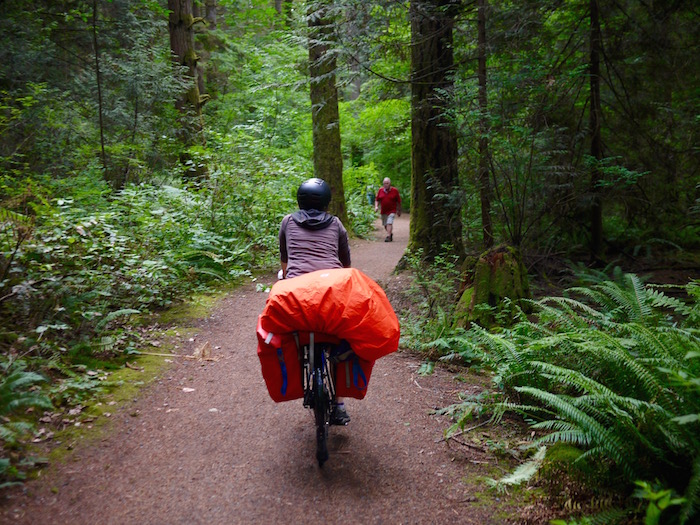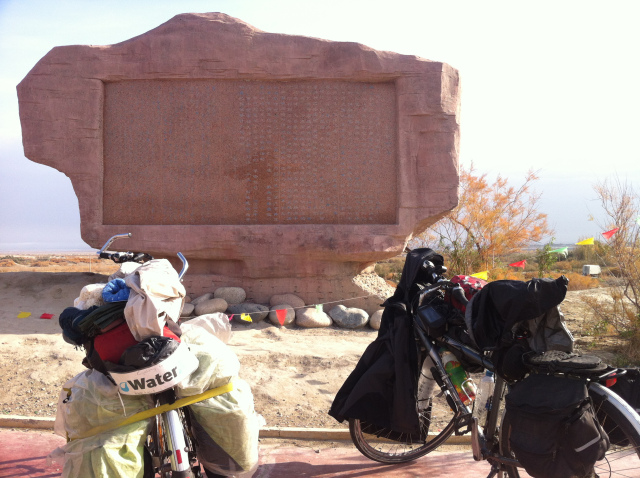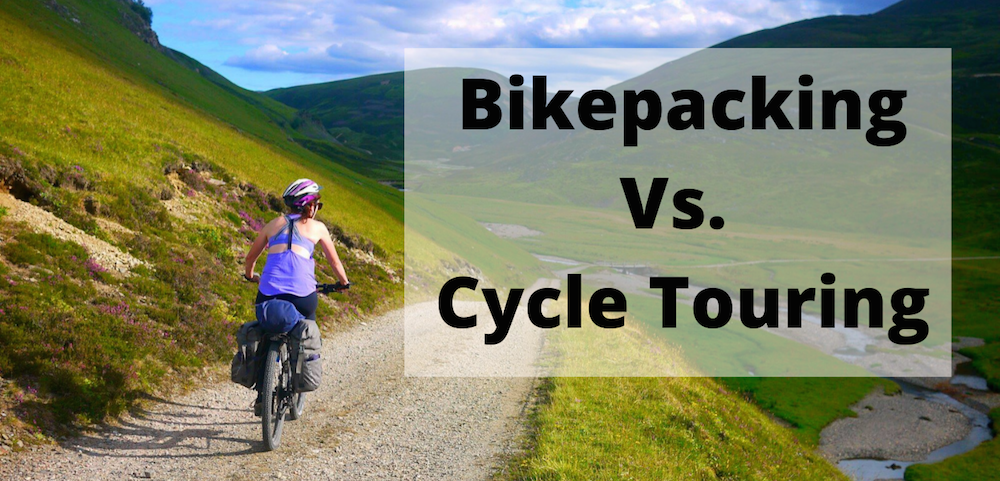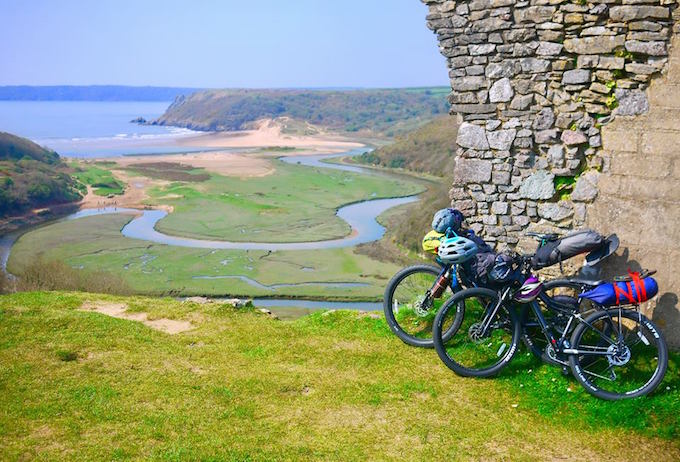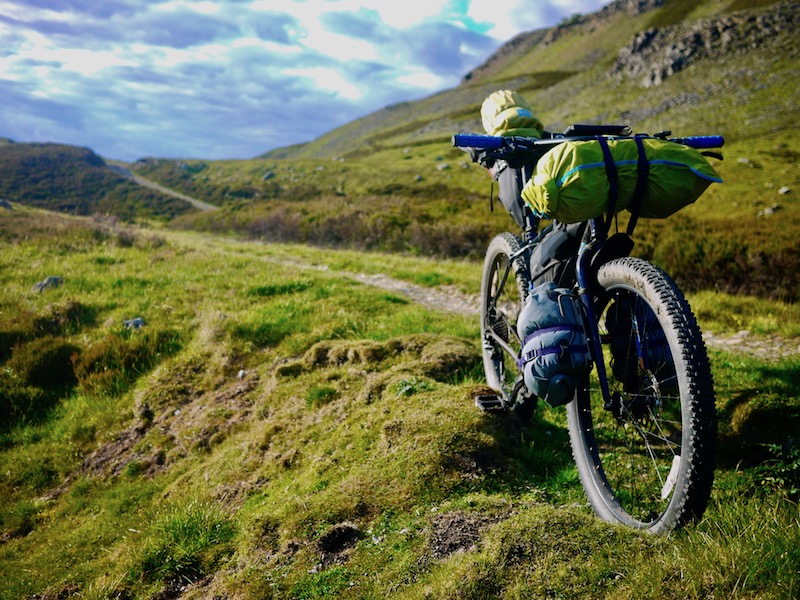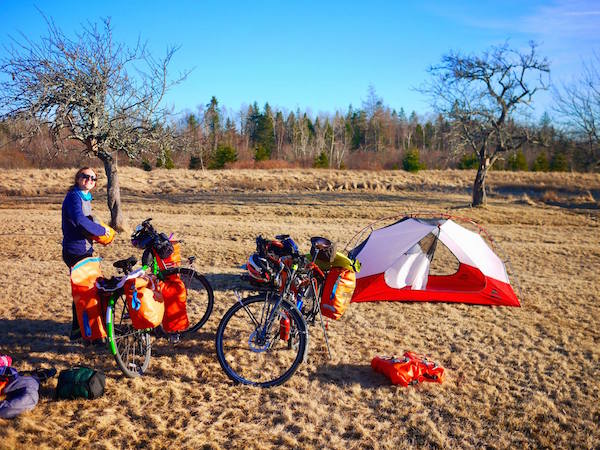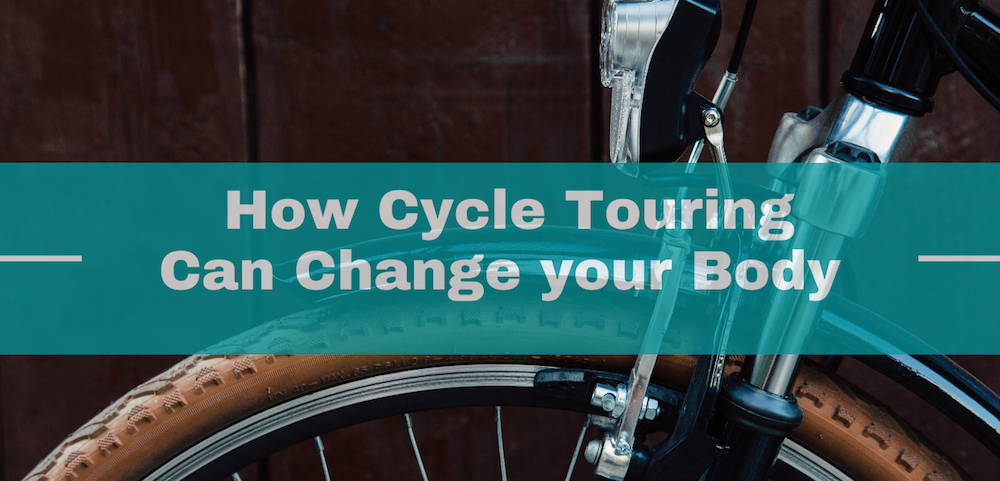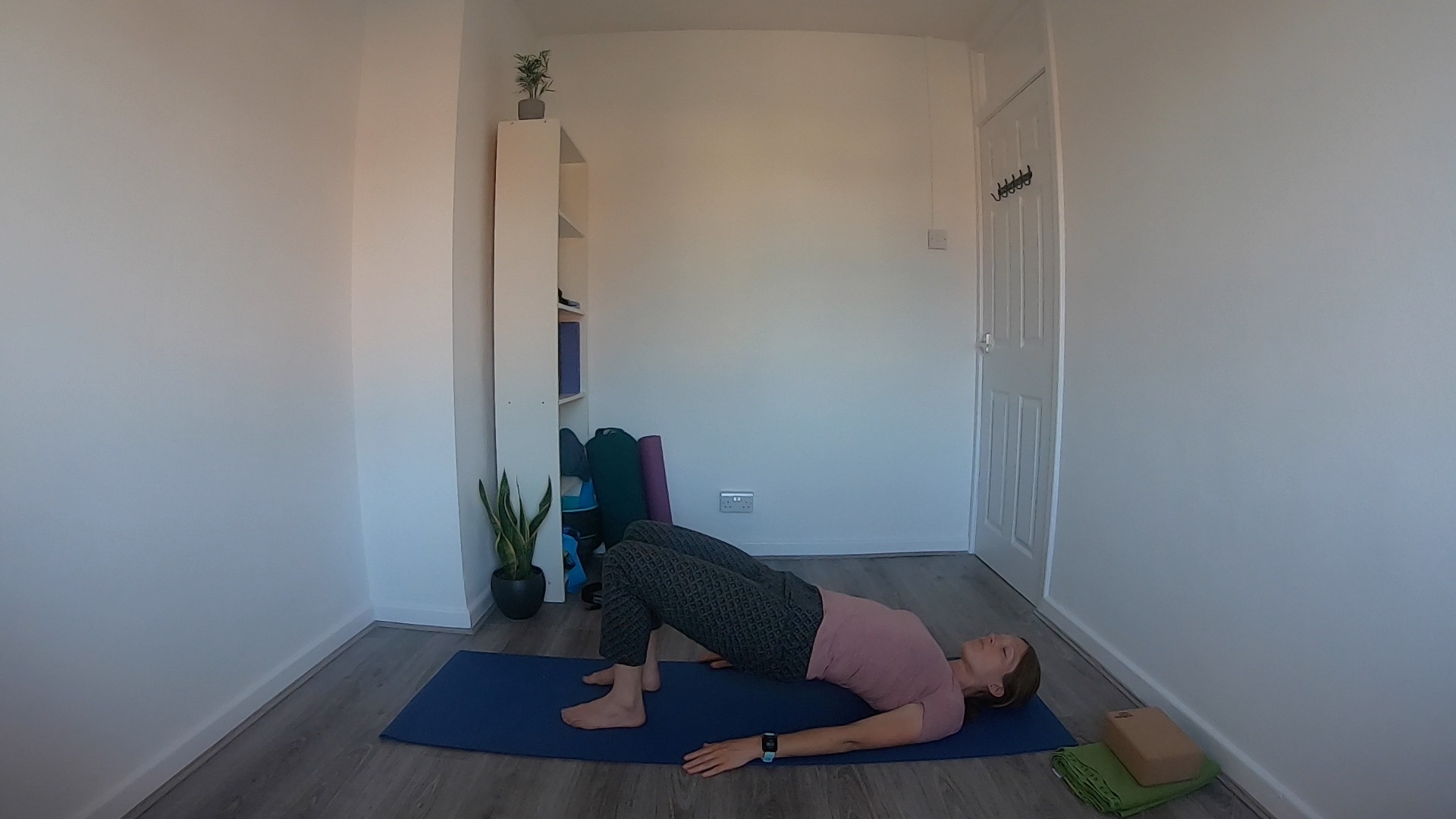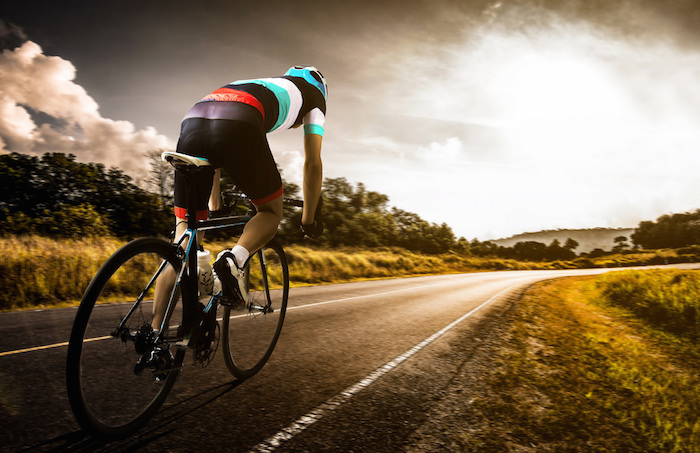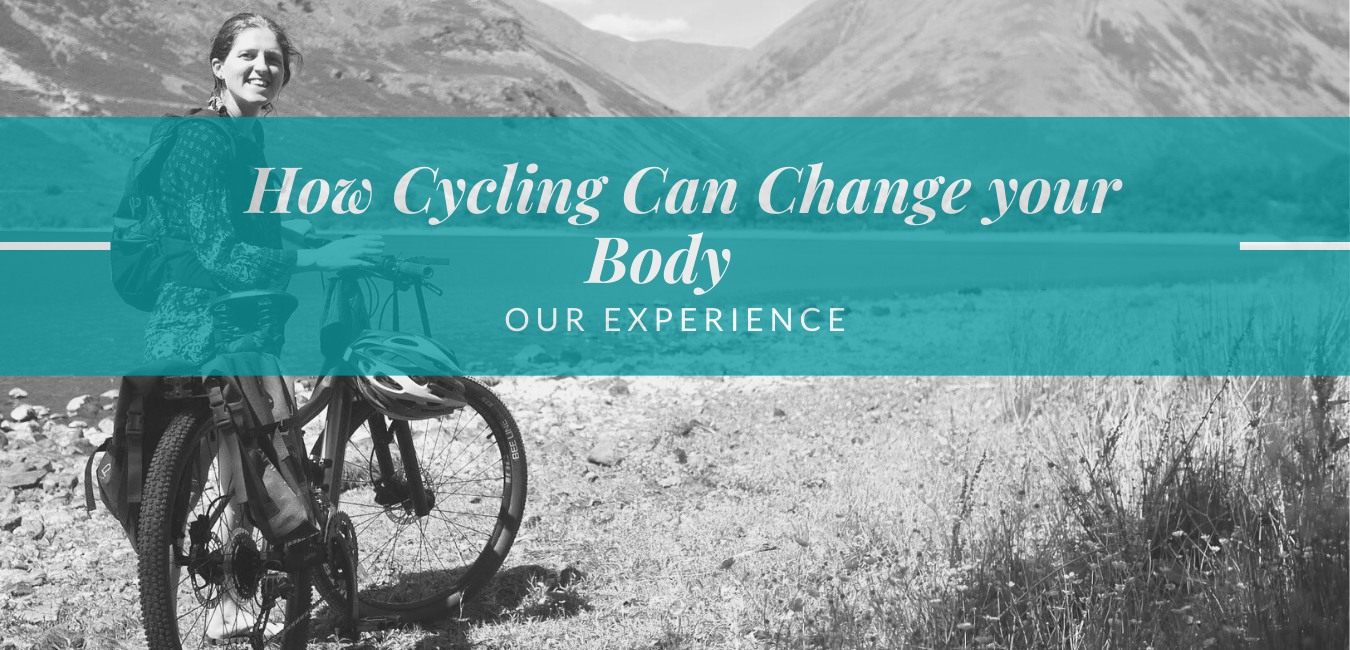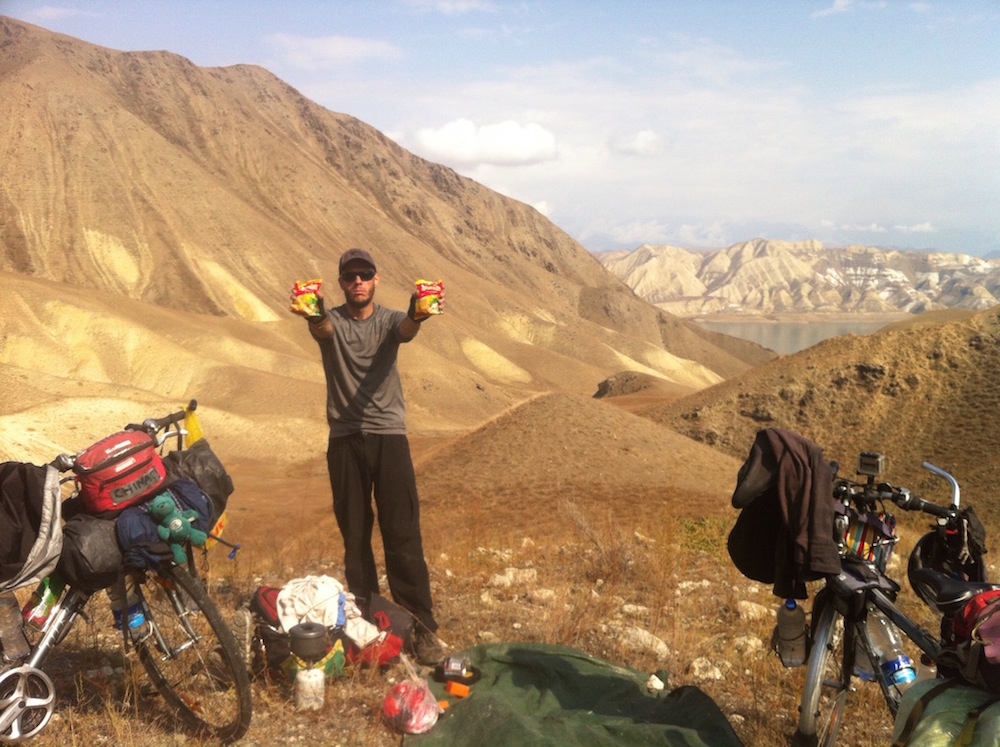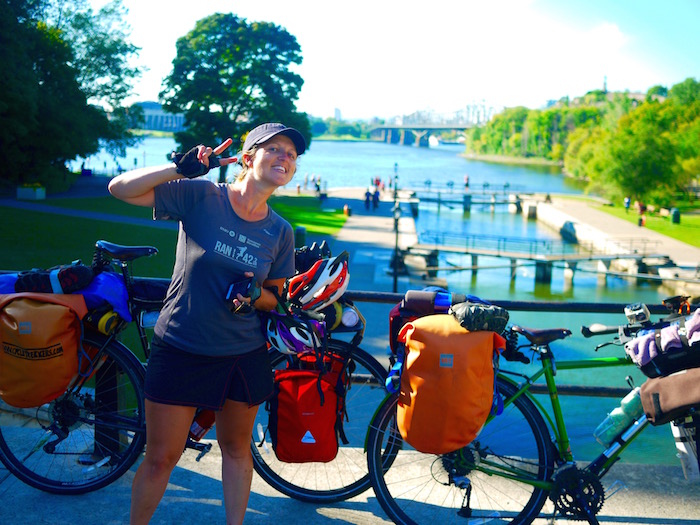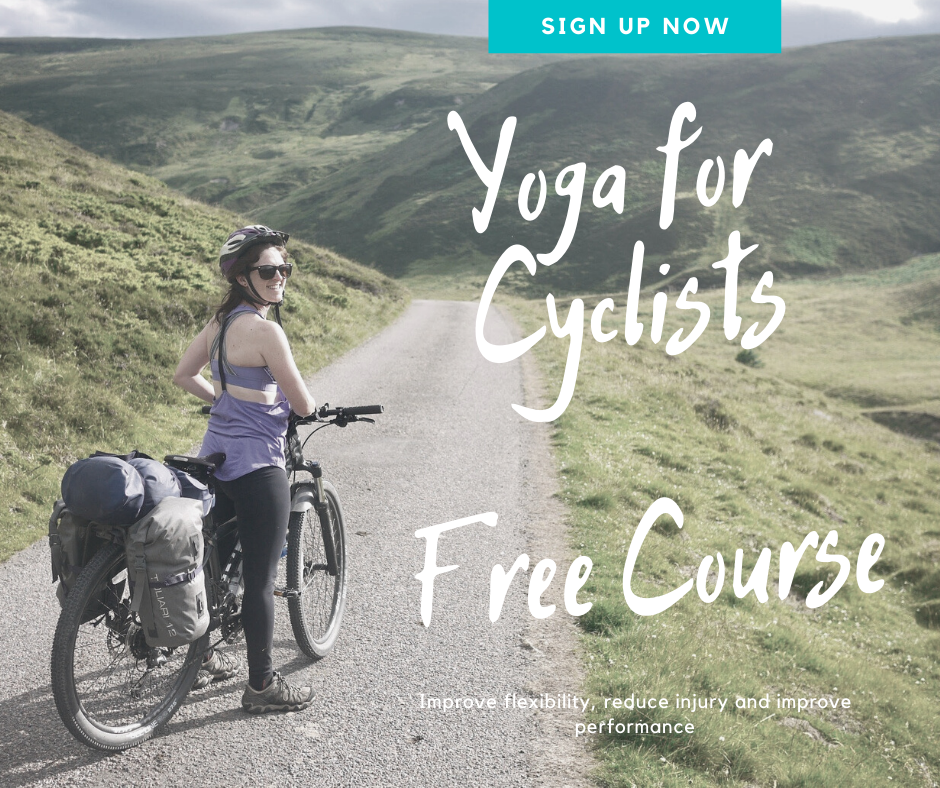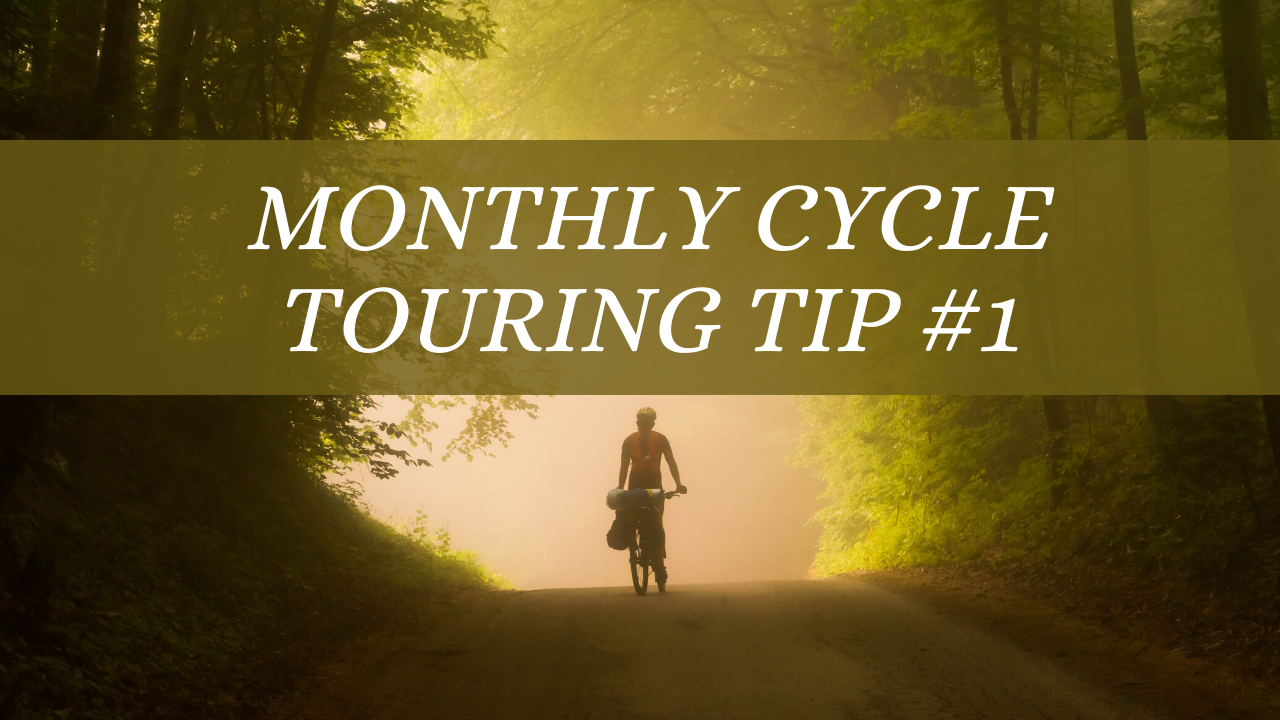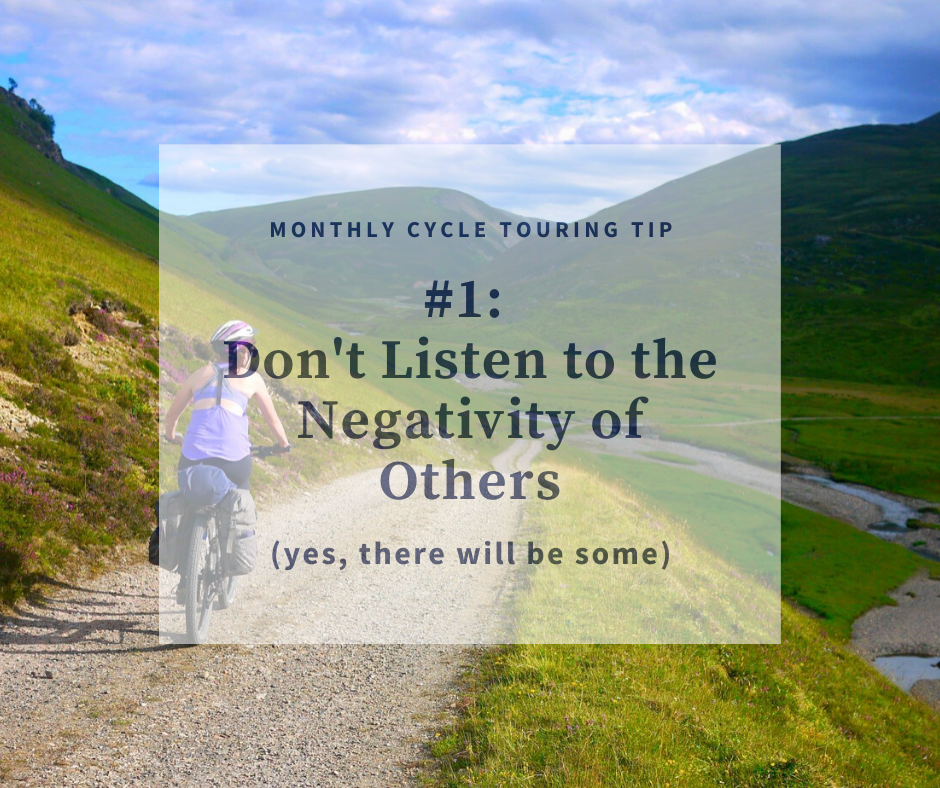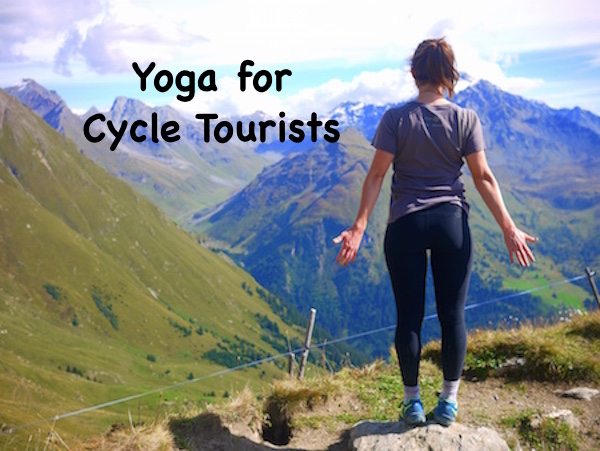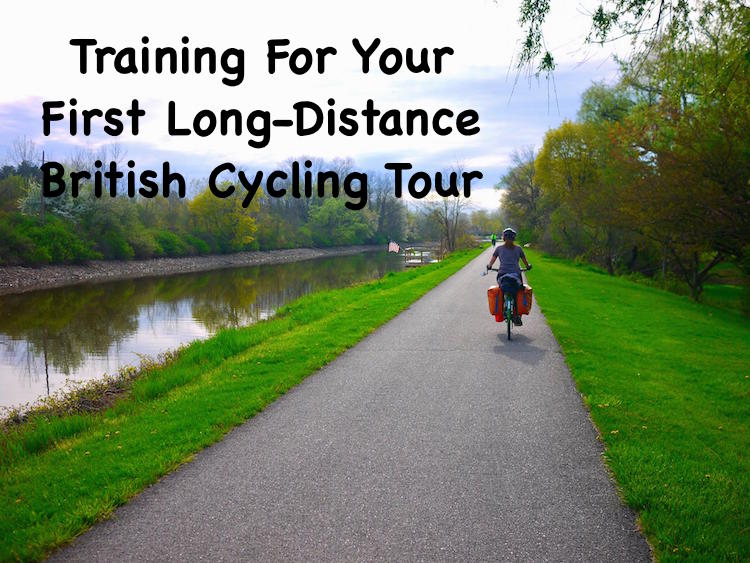The back isn’t always something we consider when cycling, however particularly during cycle touring or any long distance cyclists, we spend an extended period of time in the saddle, bending forward towards the handle bars. This puts a lot of pressure on the spine and the discs within the spine.
Hence strengthening the back for cycle touring (or any type of cycling) is really important in ensuring we protect our spine and prevent lower back pain and hunching/ rounding forward. Next week I plan to write an article on lower pain pain, which will focus a bit more on this.
I’ve also previously written an article about how cycle touring can change your body, which touches on the impact on the spine and some of the other things you may experience when spending hours in the saddle. Today we’ll focus primarily on back strengthening – why and how.
Why strengthening the back for cycle touring is so important
To give you some idea of the amount of pressure on the spine when bending forward (ie. putting the back in flexion) I’ll compare the amount of pressure in different positions. Now this will vary depending on the person and is purely to give you a comparison or visual. For this comparison I’ll use Suzy as an example.
- When lying down on the floor Suzy has 70 pounds of pressure on the spine.
- While standing this increases to 100 pounds.
- When seated with a straight spine, so good posture and no rounding forward, this pressure increases to 150 pounds.
- On a bike, rounding forward, Suzy increases this pressure to 300-400 pounds (depending largely on how much flexion is from the hips compared to how much flexion is in the back/ spine).
So we can see from this example that there is far more pressure on the spine and discs when rounding forward, which isn’t necessarily a bad thing. The spine has 6 degrees of movement (side to side, back to front and twisting) and movement in all these directions helps to hydrate the spinal discs, which helps mobility and stiffness.
However, when we are staying in this flexed position for an extending period of time that is when the ligaments in the back of spine can start to weaken. The muscles that support the spine can also stretch. On the other hand, the front body can get tight and the muscles shorten. This can result in back pain, specifically lower back pain and the hunching forward position, meaning it can be difficult to hold good posture in other activities.
When the back is rounded we no longer have the natural curve (lumbar curve) present in the lower spine. This natural curve helps to respond to pressure and gravity. Hence why there is an increase in pressure on the spine when rounding forward when cycling. And also why good posture when standing, sitting, walking etc is so important.
Therefore especially when spending long period of time in the saddle, it’s important to strengthen the muscles that support the back and the spine and to also take counterposes/ stretches once you’ve finished a long cycle. Below we’ll take a look at a few ways we can do this.
Strengthening the back for cycle touring – how?
Back strengthening is really important in your cycling preparation. So if you are planning a long distance cycle trip, try and incorporate some back strengthening into your training plan.
Here are two back strengthening exercises you can use. I’ve also created a short Yoga for Back Strengthening class with a few more poses and exercises you can try.
Cobra Lifts
Cobra lifts are a great way to strengthen the muscles that run along the spine (multifidi and the erectors) and the lower back.
Lie on your belly. Bring your palms so the are next to your shoulders. Keep the elbows in. Gently push the pelvis into the floor. As you inhale, roll the chest up – being careful not to crunch the neck. Holding it there and seeing whether you can lift the hands of the floor. Pull the shoulder blades in towards each other, activating the muscles in the back. Exhale to roll back down. Repeat 4-6 times. Moving slowly. If you feel any pain then come out of pose.
For a counterpose you can make a pillow with the hands. Rest the forehead on the hands and breath into the belly or/ and rock the pelvis side to side.

Birdwinging
Birdwinging is a great way to strengthen the upper back and the muscles between the shoulder blades. It also activates these muscles, so is great to do either before or after a cycle.
Bring the arms out in front. Palms facing up. Elbows in towards the lower ribs. Keep the elbows in towards the ribs as you open the arms out to the side on the inhale, drawing the shoulder blades together. On the exhale release and let the arms move back in. As you do this notice if the shoulders draw up towards the ears and see if you can draw them down the back. Repeat 5 – 10 times.
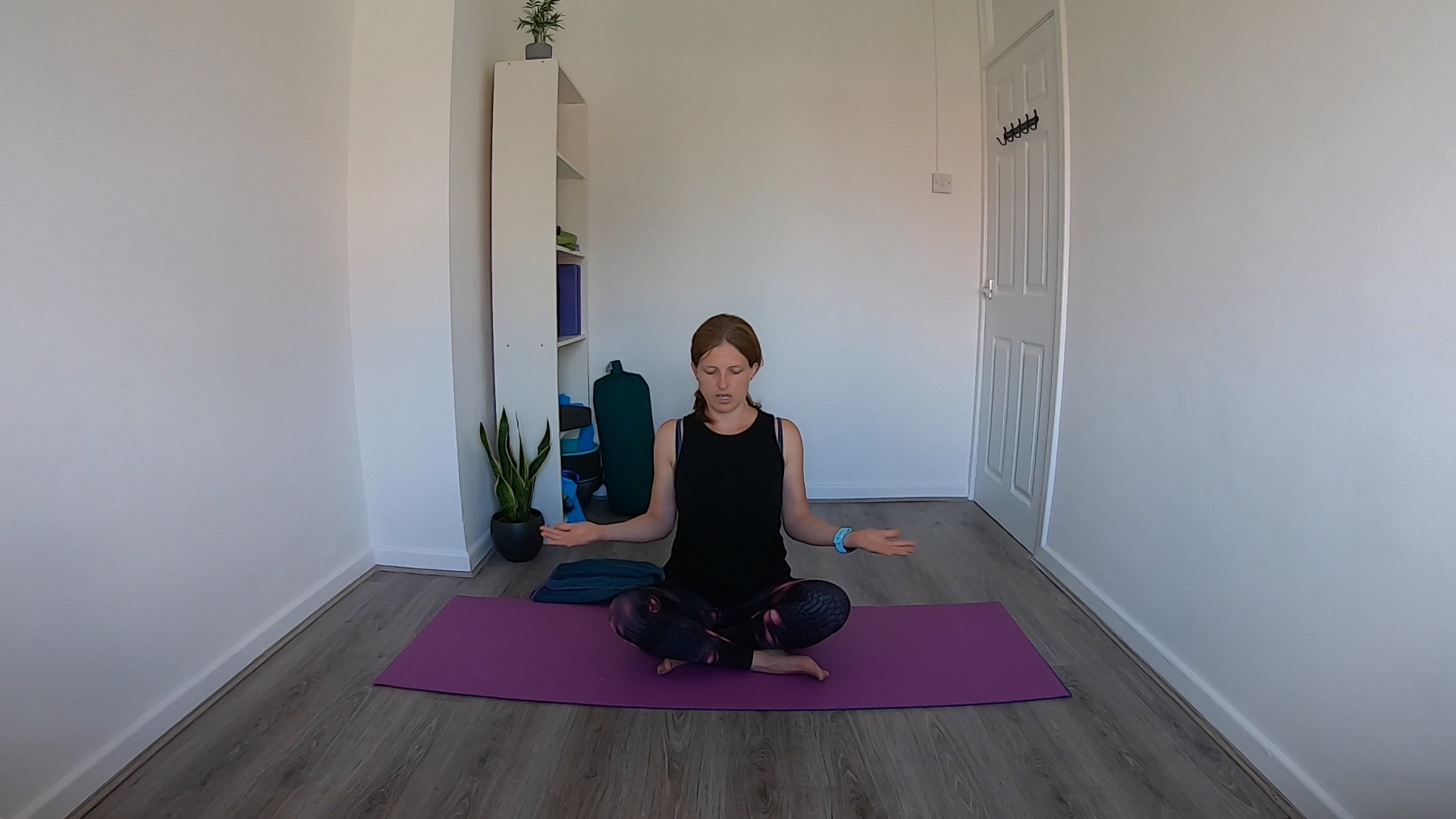
Other Spinal Movements
After cycling we also want to gently stretch the front body. We can do this with some gentle back bends or chest openers. We don’t want to take anything too extreme after being in a flexed position for a long period of time. Just some gentle chest opening movements are great. Here is 10 minute chest opening sequence to give you an idea of some stretches you could take.
Moving the spine through the 6 degrees of movement (or in this case as we’ve been flexed for so long, it would the 5 degrees of movement) is also a great way to get any kinks out of the spine and rehydrate the discs in the spine. You can do this by taking some gentle twists and side bends. This is in addition to the gentle back bends (or chest openers).
The Core
Along with the muscles in the spine (the multifidi and the erectors) the core plays an important part in spinal and back support. The core is made up of different groups of muscles. On Monday 20th July 2020 I’m running a free 7 day core challenge where each day we will look at a different muscle that makes up the core and how we can strengthen it. You’ll then be given a couple of exercises that focuses on that specific core muscle. Strengthening the core is another great way to train for your long distance cycle trip.
The challenge will take 5-10 minutes a day for 7 days, so you’ll easily be able to fit it into your day. You can either sign up to the challenge here and you’ll receive a daily email each morning for 7 days. Or you can subscribe to my YouTube to receive the notifications.
I’ve also created a short Yoga for Lower Back Pain course. This gives you bonus free access to the 7 day core challenge now.
I only launched this course today and if you sign up before 12th August with the code LOVEYOURBACK you’ll get 50% off the course price.

